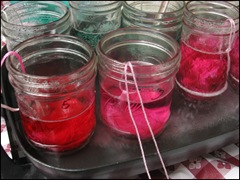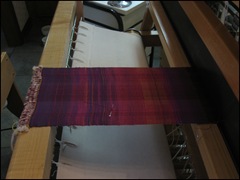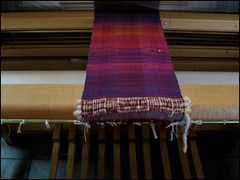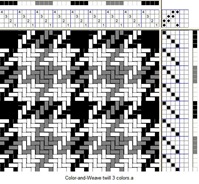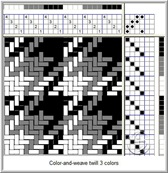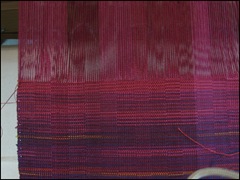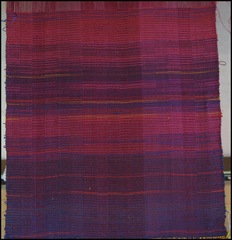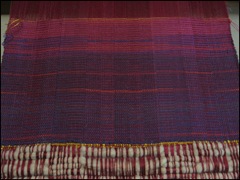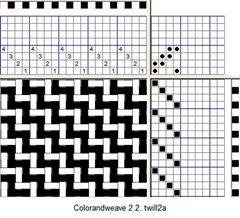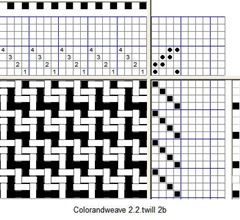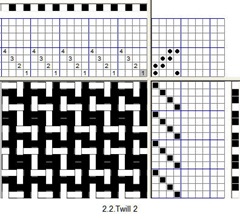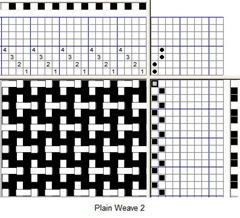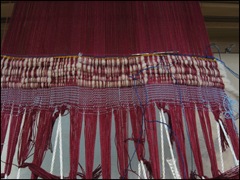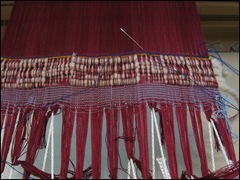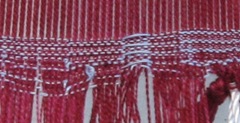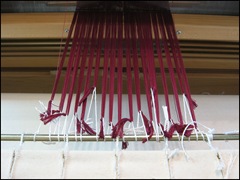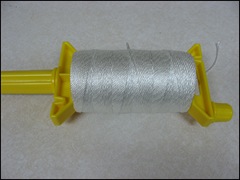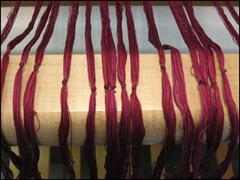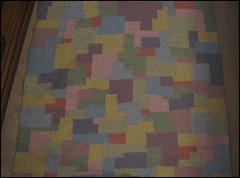LLILLIAN WHIPPLE AND WEAVECAST
I listened to Syne's interview with Lillian Whipple on her WeaveCast episode devoted to fine threads -- Episode 11. Though my threads are not quite as fine as Lillian's (she often weaves with 2/240, for example), still what Lillian Whipple had to say was of use to me.
STATIC ELECTRICITY
Of particular interest was that Lillian reinforced my growing suspicions that many of my problems working with silk are due to static electricity.
BOMBYX SILK PROBLEMS
To be honest, I have had these same problems when weaving with Bombyx silk, but on a much smaller level. The silk organzine has, thus, really only magnified these issues. As a result, I have been forced to deal with them. Now I should be able to handle them with bombyx silk as well.
HUMIDITY LEVELS
This whole notion of static electricity being a source of my problems with silk has taken me rather by surprise. I like to keep our house humidity between 40% and 50% because that is optimal for humans and that level of humidity also helps to keep pollen particles down on the floor instead of up in the air. But in the summer with air conditioning going, that is really really hard. In the summer, the only room I can successfully keep at those humidity levels is our bedroom.
During the day, in the summer then, ambient humidity in the house tends to run around 30-35%. I guess that is too dry for silk!
LINEN
Weaving with linen, by the way, poses similar problems................ Susan had reminded me of this in one of her comments, reminding me there as well of how I had soaked my plastic pirns wound with linen overnight before weaving with them. And I had sprayed the warp with water as well when I was getting ready to weave. Perhaps here are some more answers?
Related Post:
Static Electricity
Skeins Dyed
Those Pesky Selvedge Loops Again
© 2008

